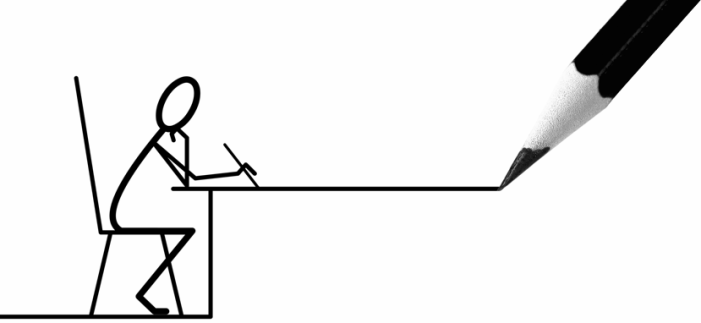
1.”Make a Connection” (1267).
I love writing. I honestly do. However, I love writing when I’m writing something I want to write. I cannot say how many stories and poems I’ve written, but I can say I have enjoyed writing every single one. The advice that the reading gave me was helpful. I thought back to everything I’ve done, for myself and for school, and I now know what I should do better. This quote and explanation that followed tells the reader to make a connection between prior knowledge and the subject that they are writing about. I try to do this as much as I can in essays and blog. But, the quote also made me think of something else. I thought about how much I enjoy writing for fun and then how much of a chore it is for me to write for my classes. I know that I need to channel my love of writing into my essays. I need to make the connection between both types of writing. After all, I am doing the same act – the outcomes and the mindset are whats different.
For example, when writing an essay for my history class I found myself going on into a tangent about social issues I am passionate about. 2.”Is it focused enough?” (1268). No, it wasn’t focused at all. It was a very messy essay when I reread it. This need to write about what I am interested in hindered the quality of my essay and I have to do most of it over again. I’m not certain if Hemingway had this same problem in school. He became a writer who wrote what his heart desired but I wonder if he always wished he could write what he wanted for school. And this questioning does not just go for Hemingway, I wonder this about all great writers. Did they curse at their history teachers for assigning them boring essays?
3.”Whatever the form, it needs to make the reader want to read more of the essay” (1271).
I was a debater in high school. At the beginning of my endeavor of being a debater I was always confused about how to put together my statements. It was not until my coach told me that “its just like an essay” that I finally understood what to do. The opening of the statement had to gave an ‘Attention Getting Device,” similar to the attention grabber mentioned in the readings. I always believed that this was an important thing to have in a statement and in an essay. If your audience isn’t interested are you really talking to anyone? If an essay or a story that I write isn’t interesting to me I can just imagine what turmoil it must bring to anyone else reading it. In my writings I like to start with analogies, phrases, or stories that the reader will take note of. Then, I come back full circle at the end of the piece and let it all make sense of them. 4.”For example, if you opened with a story or analogy, come back to it at the end to give the paper a sense of overall unity” (1271). When I’m writing poems (I know so painfully cliche of me) this sometimes happens without me even noticing until I get to the end and tie it all together.

5.”Avoid hedging phrases and words like, ‘I think,’ ‘I believe,’ ‘might,’ and ‘possibly.’ Be sure of yourself and take a clear stance” (1268).
Before seeing Hemingway’s pages of Death in the Afternoon I had never seen such marked up pages. It looked like a professor’s writing on a student’s first paper. What appalled me what the fact that this was him critiquing himself. I very much look up to him because he is able to see when he went wrong – not just dismiss his own work as genius. The hedging phrases cited in this quote are not a problem of Hemingway’s but they are problems of mine. As I stated before I only like writing when I’m writing for myself. Therefore, I’m inclined to use these phrases. Hemingway had there other, more important writing issues. 6.“As in all arts the enjoyment increases with the knowlege of the art but people a person would should know the first time they go” (749). Here, Hemingway decides that his previous writing was not inclusive and too broad. He changes person to people and would to should. These are profound changes in my opinion. He practically changes his entire statement to make a clearer statement. Another example of Hemingway critiquing himself is 7.“The Poor Horses Chapter One” (732). Here, he changes the way the entire novel is set up. Instead of naming chapters he decides to title them numerically. This is another change that makes the way he wants to set up this novel more clear. Lastly, 8.“In that case he would probably be justified in shutting his eyes as the mere fact of the child being ‘about to be’ struck by the train…” (733). In this instance he adds the phrase ‘about to be’ to the sentence about a child who had presumably being struck by a train. He decided to set back and write that the child had not yet been struck but was going to be. Most of Hemingway’s edits are profound and make his writing even better.
******Please put these points towards next semester!!!*******